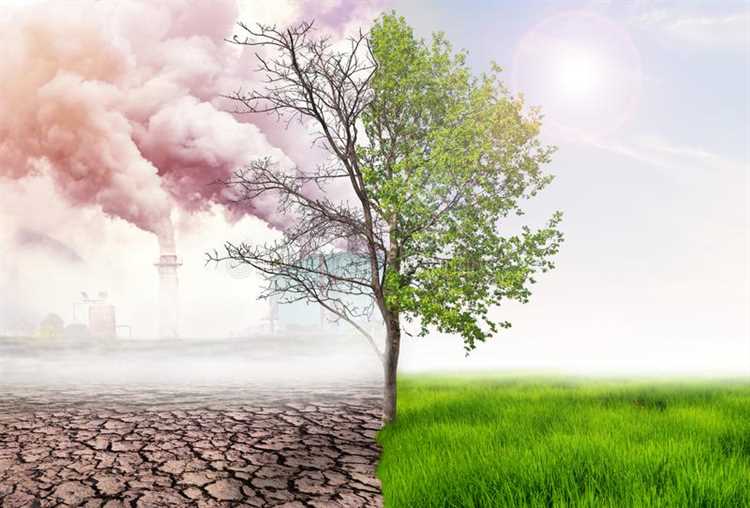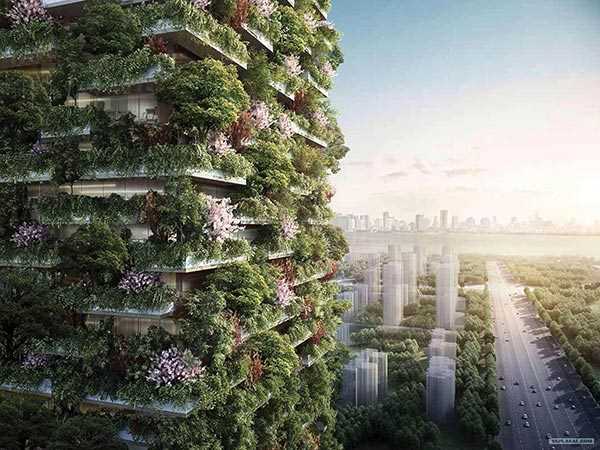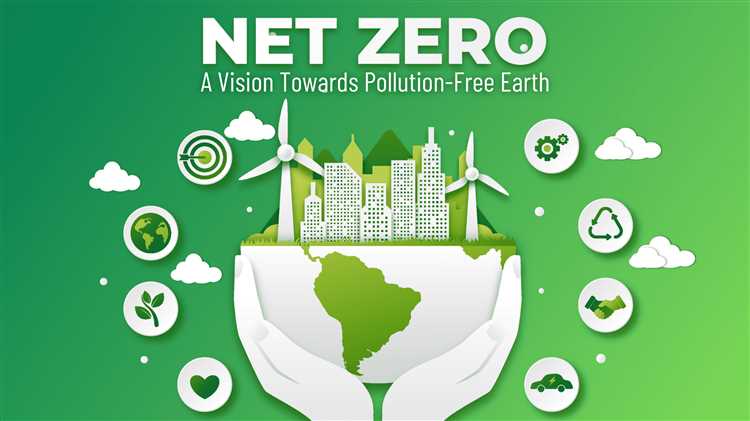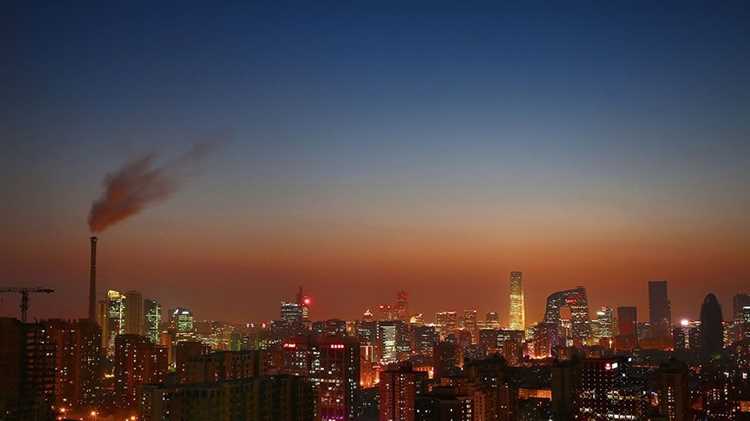
The issue of air pollution has become a critical problem around the world, with densely populated cities being the most affected. However, amidst all the gloomy news, there are still cities that have managed to keep their air clean and fresh. If you’re wondering which city can boast the title of the most pollution-free in the world, read on to find out!
One city that consistently ranks high on the list of pollution-free cities is Reykjavik, the capital of Iceland. With its small population and an abundance of geothermal energy, Reykjavik has managed to maintain pristine air quality. The Icelandic government has also implemented strict policies to curb pollution, making it an ideal destination for those seeking fresh air and a healthy lifestyle.
Another noteworthy city is Zurich, the largest city in Switzerland. Surrounded by the stunning Swiss Alps, Zurich enjoys a clean and pure atmosphere. The city’s commitment to sustainability and environmental protection has led to well-maintained parks and green spaces, contributing to its pollution-free status. Additionally, the excellent public transportation system in Zurich encourages residents and visitors alike to leave their cars at home, reducing air pollution levels even further.
Finally, we cannot forget about Vancouver, Canada, which is consistently recognized for having one of the best air qualities in the world. Located between the Pacific Ocean and the North Shore Mountains, Vancouver is blessed with clean sea breezes and breathtaking mountain vistas. The city’s commitment to sustainable development, renewable energies, and green initiatives has made it a shining example of a pollution-free city.
While these cities may lead the way in terms of air quality, it is crucial to remember that pollution is a global issue that affects us all. By adopting sustainable practices and supporting environmental initiatives, we can all contribute to creating a cleaner and healthier planet for future generations.
- Pollution-Free Cities: Discovering the Cleanest Urban Areas Around the Globe
- Unveiling the World’s Greenest Metropolis
- Leading the Way: The City Driving Sustainability Innovations
- Sustainable Infrastructure
- Green Spaces and Biodiversity
- Breathing Fresh Air: The Urban Paradise with Minimal Pollution
- What makes this city stand apart?
- The benefits of minimal pollution:
- A Glimpse into the Eco-Friendly City Reducing Carbon Footprint
- Setting a Green Example: Discover the City with the Cleanest Water and Air
- Water: A Natural Treasure
- Air: Breathing Easy
- Embracing Sustainable Living: Exploring the City Committed to Environmental Protection
- Q&A:
- Which city is considered the most pollution-free in the world?
- What factors contribute to Zurich’s low pollution levels?
- Are there any other cities known for their low pollution levels?
- How do these cities maintain their low pollution levels?
Pollution-Free Cities: Discovering the Cleanest Urban Areas Around the Globe
Living in a pollution-free city is a dream for many people. It not only promotes a healthy lifestyle but also provides a clean and sustainable environment. While pollution levels continue to rise in many cities worldwide, there are still some urban areas that have successfully managed to keep their air and water clean.
One such city is Zurich in Switzerland. Known for its pristine beauty and high quality of life, Zurich consistently ranks among the cleanest cities in the world. The city takes its pollution control measures seriously, with strict regulations on emissions and waste management. It also encourages alternative modes of transportation, such as cycling and public transit, to reduce pollution caused by motor vehicles.
Another pollution-free city worth mentioning is Adelaide in Australia. Located on the southern coast of the country, Adelaide has made significant efforts to reduce pollution and improve air quality. The city has implemented initiatives like tree planting, renewable energy projects, and public transportation improvements. These strategies have helped make Adelaide one of the cleanest cities in Australia.
In Asia, Singapore stands out as a pollution-free city. Despite being a bustling metropolis, Singapore has managed its waste and pollution levels effectively. The city-state has stringent regulations in place to control emissions from industries and vehicles. Singapore also invests in green technologies and urban planning to create sustainable and livable spaces.
Reykjavik, the capital city of Iceland, is another example of a pollution-free urban area. The city’s commitment to sustainability and clean energy has made it a model for other cities around the world. Reykjavik relies primarily on geothermal and hydroelectric power, reducing its dependence on fossil fuels. This eco-friendly approach has led to clean air, water, and overall environmental well-being in the city.
When it comes to pollution-free cities, these examples prove that it is possible to achieve clean and sustainable urban environments. By implementing strict regulations, promoting renewable energy, and prioritizing public transportation, these cities have set a great example for others to follow. Through these efforts, they are not only providing their residents with a high quality of life but also taking responsible steps towards a greener future.
In conclusion, while the battle against pollution is ongoing in many parts of the world, there are cities that have managed to create a pollution-free environment. These cities serve as role models, demonstrating the importance of sustainable practices and prioritizing the well-being of their residents. As global awareness of pollution continues to grow, more cities are likely to join the ranks of pollution-free urban areas, creating a healthier and cleaner world for future generations.
Unveiling the World’s Greenest Metropolis
This city has made significant investments in renewable energy, with a large portion of its electricity coming from clean sources such as wind, solar, and hydro power. It has also implemented innovative transportation systems, including an extensive network of bike lanes and electric public transportation options, reducing reliance on fossil fuels and promoting eco-friendly alternatives.
But it’s not just about energy and transportation – this metropolis has also prioritized green spaces and sustainable urban planning. It boasts an impressive number of parks and green areas, providing its residents with ample opportunities to connect with nature and enjoy outdoor activities. Additionally, the city has implemented strict building codes that promote energy efficiency and the use of sustainable materials.
- Green energy sources
- Innovative transportation systems
- Extensive network of bike lanes
- Electric public transportation options
- Abundance of parks and green areas
- Strict building codes promoting energy efficiency
- Use of sustainable materials
This metropolis has become a role model for other cities around the world, demonstrating that it is possible to achieve economic growth while prioritizing environmental sustainability. Its commitment to creating a greener future is truly inspiring, setting an example for cities everywhere.
So, if you’re looking for the world’s greenest metropolis, look no further – this city is leading the way towards a more sustainable future for all.
Leading the Way: The City Driving Sustainability Innovations

As the world becomes more aware of the urgent need for sustainable practices, some cities are taking the lead in driving sustainability innovations. One such city is [City Name], which has established itself as a pioneer in environmental conservation and sustainable development.
Sustainable Infrastructure
[City Name] has taken significant steps to promote sustainable infrastructure. The city has invested in renewable energy sources like solar and wind power, reducing reliance on fossil fuels. It has implemented smart city technology to optimize energy consumption and reduce waste. The city’s sustainable transport system, including electric buses and bike-sharing programs, has helped reduce carbon emissions and improve air quality.
Green Spaces and Biodiversity
[City Name] is committed to preserving its natural environment and promoting biodiversity. The city has dedicated large areas to green spaces, including parks and nature reserves, providing its residents with access to recreational areas and improving air quality. It has implemented strict regulations to protect its wildlife and has diversified its urban flora to support local ecosystems.
Furthermore, [City Name] has actively sought to engage its citizens in sustainability initiatives. It has implemented educational programs and awareness campaigns to promote sustainable practices among residents. The city regularly holds events and workshops focused on environmental conservation and encourages its citizens to participate in recycling and waste reduction programs.
- [City Name] has established partnerships with local businesses and organizations to drive sustainable innovation. It provides incentives and support to companies that adopt green practices and develop sustainable technologies.
- The city has also implemented waste management programs, including recycling and composting, to reduce the amount of waste sent to landfills.
- [City Name] actively collaborates with other international cities to exchange knowledge and best practices in sustainability.
Overall, [City Name] serves as an inspiring example for cities worldwide, showing that sustainable development is not only possible but also vital for a cleaner and healthier future.
Breathing Fresh Air: The Urban Paradise with Minimal Pollution

What makes this city stand apart?

Located in a picturesque setting overlooking stunning mountains and pristine rivers, this urban paradise takes pollution control seriously. With strict regulations and innovative initiatives, it has achieved minimal pollution levels, making it a haven for those seeking a healthy and sustainable environment.
Green spaces and clean transportation: One of the key factors contributing to the minimal pollution levels in this city is its abundance of green spaces. Parks, gardens, and tree-lined streets help absorb pollutants and provide a breath of fresh air for residents and visitors alike. Additionally, the city promotes and encourages the use of clean transportation methods such as cycling and electric vehicles, reducing emissions from traditional vehicles on the roads.
Renewable energy: Another notable aspect of this urban paradise is its commitment to renewable energy sources. The city has invested heavily in solar and wind energy, reducing reliance on fossil fuels and minimizing air pollution caused by traditional power sources. As a result, residents enjoy cleaner energy and contribute to the overall reduction of pollution.
The benefits of minimal pollution:
Living in a city with minimal pollution has numerous benefits for its residents and the environment. Here are a few:
- Improved health: Clean air quality promotes better respiratory health and reduces the risk of respiratory diseases. People living in this city experience fewer cases of asthma and other respiratory illnesses.
- Enhanced quality of life: The absence of pollution allows for a more pleasant and enjoyable living experience. Residents can freely engage in outdoor activities without worrying about the health hazards associated with polluted air.
- Sustainable development: By emphasizing pollution control, this urban paradise sets an example for other cities to follow. Its initiatives inspire sustainable development practices that prioritize the well-being of residents and the preservation of the environment.
In conclusion, this urban paradise stands out as a shining example of a city with minimal pollution. Its commitment to creating a healthy and sustainable environment has made it a truly remarkable destination for both residents and visitors. Breathing fresh air and enjoying the natural beauty of this city is a truly rejuvenating experience.
A Glimpse into the Eco-Friendly City Reducing Carbon Footprint
As concern over climate change and environmental degradation grows, cities around the world are increasingly working towards reducing their carbon footprints. One city that stands out for its innovative and successful efforts in this regard is [CITY NAME].
[CITY NAME] has implemented a range of eco-friendly initiatives to minimize its carbon emissions. One such initiative is the promotion of sustainable transportation. The city has an extensive network of bike lanes and pedestrian-friendly infrastructure, encouraging residents to use non-motorized modes of transportation. Additionally, [CITY NAME] has invested in efficient public transportation systems, including electric buses and trains, making it easier for people to choose greener alternatives.
Another significant factor contributing to [CITY NAME]’s low carbon footprint is its commitment to renewable energy. The city has made substantial investments in solar and wind energy projects, which generate clean electricity and reduce reliance on fossil fuels. Furthermore, [CITY NAME] actively encourages residents and businesses to switch to renewable energy sources, offering incentives and subsidies to make the transition easier and more affordable.
[CITY NAME] also places a strong emphasis on waste management and recycling. The city has implemented comprehensive recycling programs, ensuring that as much waste as possible is diverted from landfills. Additionally, [CITY NAME] has also embraced the concept of circular economy, promoting the reuse and repurposing of materials to minimize waste generation.
Moreover, [CITY NAME] is known for its green spaces and commitment to urban forestry. The city has an abundance of parks, gardens, and green rooftops, which not only improve air quality but also provide habitats for wildlife. [CITY NAME] actively supports tree planting initiatives and encourages residents to participate in community gardening projects, fostering a stronger connection with nature.
In conclusion, [CITY NAME] serves as a shining example of an eco-friendly city that is successfully reducing its carbon footprint. Through its sustainable transportation systems, renewable energy initiatives, waste management programs, and dedication to urban forestry, the city is setting a precedent for other cities to follow in the fight against climate change.
Setting a Green Example: Discover the City with the Cleanest Water and Air

When it comes to environmental sustainability, one city stands out as a shining example to others around the world. Located in the heart of a breathtaking natural landscape, this city boasts not only pristine air quality but also some of the cleanest water in the world. With a commitment to preserving its natural resources and promoting sustainable practices, it has become a model for cities striving to improve their ecological footprint.
Water: A Natural Treasure
One of the greatest assets of this city is its abundant clean water sources. Fed by glacial meltwater and natural springs, its rivers and lakes provide residents with a constant supply of fresh, pure water. Stringent environmental regulations ensure that this precious resource remains untainted by pollution. The city’s wastewater treatment plants are equipped with state-of-the-art technology, ensuring that only the cleanest water is released back into the environment.
Air: Breathing Easy
In this city, breathing fresh air is not an impossibility but a reality. The city’s strict emission standards and focus on renewable energy have drastically reduced air pollution levels. The absence of heavy industries and a well-maintained public transportation system contribute to the city’s low carbon emissions. Taking a stroll through its sprawling parks, visitors will find themselves surrounded by clean air and stunning vistas.
| Key Environmental Factors | Results |
|---|---|
| Water Quality | Excellent |
| Air Quality | Very good |
| Carbon Emissions | Low |
| Renewable Energy Usage | High |
Visitors to this environmentally conscious city not only get to experience its stunning natural beauty but also witness firsthand what can be achieved through sustainable urban planning and responsible resource management. It serves as a reminder that a harmonious coexistence between humans and nature is not only possible but also essential for our future.
Embracing Sustainable Living: Exploring the City Committed to Environmental Protection
In a world where pollution and climate change are increasingly pressing issues, there is one city that stands out for its unwavering commitment to environmental protection. This city has implemented innovative policies and initiatives to reduce pollution levels and promote sustainable living.
This city, located in a picturesque setting surrounded by green spaces and clean air, has become a haven for eco-conscious individuals who prioritize a low-carbon lifestyle. It has implemented strict regulations on emissions from vehicles, industries, and power plants, ensuring that air pollution levels are kept to a minimum.
Moreover, this city has invested heavily in public transportation, making it easy for residents and visitors to get around without relying on private vehicles. A comprehensive network of buses, trams, and subways not only reduces traffic congestion but also contributes to lowering carbon emissions.
Green spaces are also a priority in this city. Urban planning has focused on creating parks and gardens, providing residents with ample opportunities to connect with nature. These green spaces not only enhance the city’s aesthetic appeal but also act as natural air filters, improving overall air quality.
In addition to its efforts in reducing air pollution, this city has implemented a comprehensive waste management system. Recycling and composting programs are widely available, and citizens are encouraged to separate their waste to minimize landfill waste. Furthermore, the city has implemented a ban on single-use plastics, promoting the use of eco-friendly alternatives.
Education and awareness are also key components of the city’s commitment to environmental protection. Schools, universities, and community centers organize workshops and campaigns to educate people about the importance of sustainable living. This widespread knowledge helps foster a culture of environmental consciousness and empowers individuals to take action in their daily lives.
| Key Features of the City Committed to Environmental Protection |
|---|
| Strict regulations on emissions |
| Extensive public transportation network |
| Abundance of green spaces |
| Comprehensive waste management system |
| Educational programs and campaigns |
In conclusion, this city is setting an exemplary standard for environmental protection and sustainability. Its commitment to reducing pollution, promoting sustainable transportation, preserving green spaces, managing waste effectively, and educating its citizens is commendable. As the world grapples with the challenges of climate change, this city provides a blueprint for other communities to follow in its quest for a cleaner, greener future.
Q&A:
Which city is considered the most pollution-free in the world?
The city considered the most pollution-free in the world is Zurich, Switzerland.
What factors contribute to Zurich’s low pollution levels?
Zurich’s low pollution levels can be attributed to several factors, including strict environmental regulations, a well-developed public transportation system, and a focus on renewable energy sources.
Are there any other cities known for their low pollution levels?
Yes, besides Zurich, cities like Copenhagen, Denmark, and Reykjavik, Iceland, are also known for their low pollution levels.
How do these cities maintain their low pollution levels?
These cities maintain their low pollution levels through various measures such as promoting biking and walking, investing in renewable energy infrastructure, and implementing strict emission standards for vehicles.